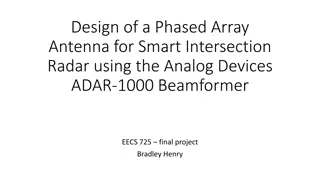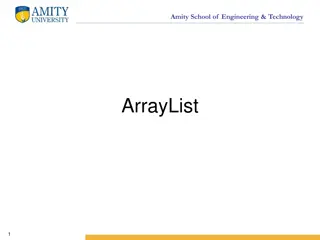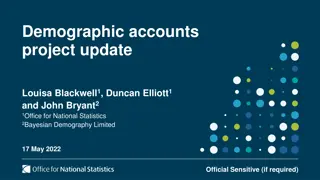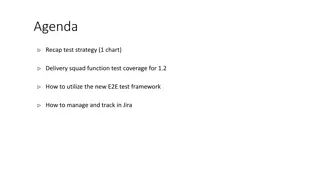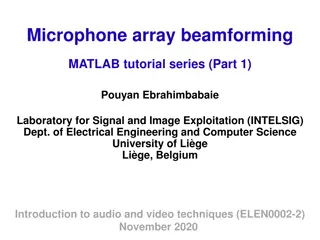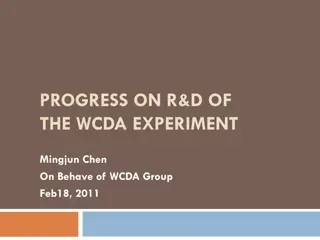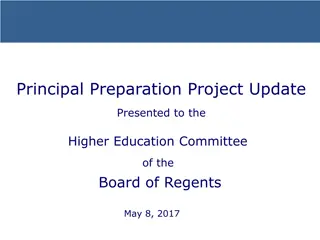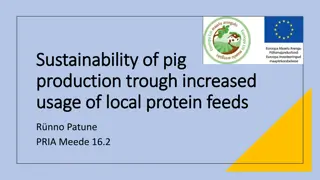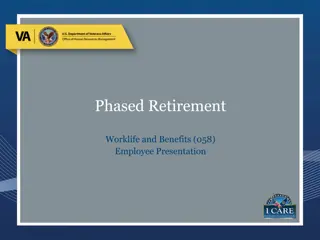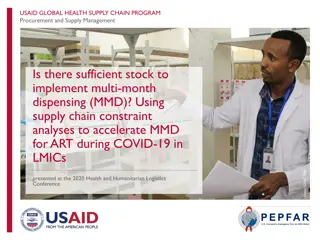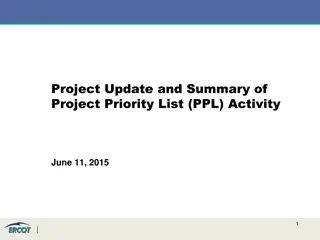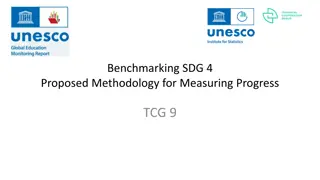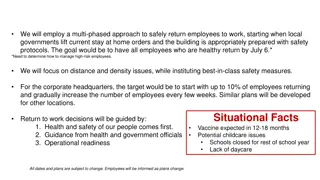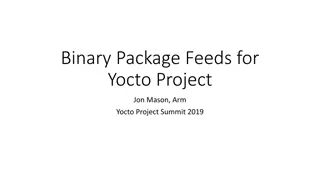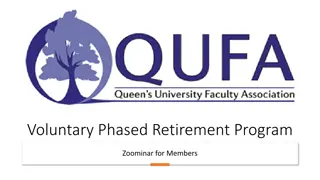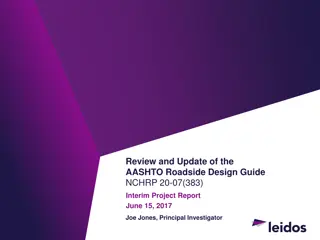Progress Update on Phased Array Feeds Project - June 2015
In June 2015, progress was reported on the Phased Array Feeds project, highlighting successful tests at the Green Bank Telescope (GBT). The collaboration included advancements in beamforming technology, backend bandwidth expansion, and instrumentation upgrades. Despite some discrepancies between models and measurements, active investigations and upgrades are underway to improve system performance.
Download Presentation

Please find below an Image/Link to download the presentation.
The content on the website is provided AS IS for your information and personal use only. It may not be sold, licensed, or shared on other websites without obtaining consent from the author.If you encounter any issues during the download, it is possible that the publisher has removed the file from their server.
You are allowed to download the files provided on this website for personal or commercial use, subject to the condition that they are used lawfully. All files are the property of their respective owners.
The content on the website is provided AS IS for your information and personal use only. It may not be sold, licensed, or shared on other websites without obtaining consent from the author.
E N D
Presentation Transcript
PAF Status Meeting June 2015 B. Shillue
February Slide Phased Array Feeds The Jan 2015 GBT test was successful, demonstrating: Seven low-noise beams on sky Tsys/eff of central beam =48K Close correspondence between measured result and model Lower Tsys will be possible by expected improvements in the LNAs
February Slide Successful GBT test Jan 2015 Collaboration with Beamformer Project Wide-Field Focal Plane Array Beamformer for Diffuse Hydrogen, Pulsars and Fast Transient Surveys on the GBT - to expand backend bandwidth to 150 MHz New digital downconverter and photoreceiver for improved performance and reliability Upgrade to low-noise amplifiers underway Despite successful GBT test, the model and data do not match perfectly. There is an active investigation to resolve this Instrumentation upgrades include: Integration of new digital downconverter with Phased array receiver Production of digital receiver PCB Layout and fabrication of improved low-noise amplifier prototype
Other Outcomes of January Test Results published as NRAO EDIR#326 HI line was detected Tsys/eff of central beam = 45.5K, increases by 13K for 1 FWHM offset Beamformer weights transferred from calibrator to targets at different Az, El Survey speed exceeds the GBT L-band system by 20% Fairly good agreement between results and model, some discrepancies but likely all or mostly instrumental Discrepancy between measured and modeled Tsys/eff: Model predicts about 38K, we measure between 40-46K The 40-46K Tsys/eff result depends on calibration flux density but should NOT! The dependence on calibration source strength has not been understood after extensive testing, but we suspect may be due to another spurious effect which causes noise temperature measured after the downconverters to be higher than noise temperature measured before the downconverters. Possible cause is inter-channel coupling
2015 PAF Milestones POP Milestone Description Date 19 Prototype and evaluate redesigned low noise amplifiers. 9/30 20 Integrate and test the digital downconverter with PAF front end 6/30 21 Digital receiver development: Prototype photoreceiver PC board and test with Roach 2 firmware 9/30 22 Improve PAF electromagnetic and beamforming model 3/31 23 Feasibility study for improved PAF receiver 9/30 These are all on track
Resources FY2015: Ten people with allocations ranging from 0.10 to 0.90 Is this fracturing a problem? Two people with allocations of 0.20 have made great contributions Some people have made contributions without a PAF allocation (John Ford s group), Rick Fisher More than fractured FTEs, resource competition, has been more of a challenge
LNAs Initial design and circuit model is done Made decision to separate the input coax from the LNA, so the LNA will have an input connector LNA board layout and case mechanical design little progress recently, people and priorities were juggled this week to make it go faster LNA is now the critical path item for the next telescope test: Make prototype Test Prototype Adjust design, re-spin Manufacture and assemble 20 dual LNAs Test Q=20 Integrate into Front End Receiver
Roach2 Polyphase Filter Bank Backend Roach2 backend is being developed to accomplish the F stage of the backend Photoreceiver cards fabrication by DigiCom, delivery expected any day First test of Digital transmitter with photoreceiver and Roach2 will take place in Cville in July, with Jason Castro assisting Subsequent testing will be done by Vereese van Tonder in GB reporting to John Ford
Front End Integration All of the following are being integrated into a Front End box in Green Bank (Bob Simon) Digital Downconverter (5 Blades) Linear power supplies Microcontroller for Monitor/Control Thermal shutdown circuit Peltiers and fans Digital transmitter fiber optic outputs and bulkhead connections RF, LO, and timing Cabling All in an RFI-tight enclosure Tests will include: RFI compliance testing Monitor and control firmware testing Test with Digital Link
Front End and Cryogenic New LNAs, Airline thermal transitions and Coaxial vacuum feedthrus Assembed *with new cryostat* into new Front End box with digital downconverter This allows old PAF FLAG receiver to remain untouched
Expected Improvement Existing PAF ~45K Tsys/h with Tsys~32K Improvement >= 5K from LNA Improvement 3-5K from new downconverter Tsys ~ 22-24K, Tsys/h <= 31-34K Existing PAF L-Band survey speed is 20% better than prime focus single pixel L-band receiver If we also increase the dipole spacing, the off-axis beam efficiency will be much improved Resulting receiver can have 4x the survey speed of single pixel L-band
Longer term Vision for PAF Green is the engineering Build-Test Path Blue is the Research and Development Path
Cryogenic Test and Development Following the STARGATE meeting and the student exchange plan, we setup a cryogenic test and development station in the CDL Rick Fisher wrote a short white paper on R&D areas Focus on two areas: Use of new low loss foams to support a large vacuum window needed to cool elements of a large array New cryogenic dewar concept to build lighter-weight more efficient cryostats for large format PAFs This effort is in a startup phase Wiki is at https://staff.nrao.edu/wiki/bin/view/CDLInternal/Phas edArrayFeedCryogenics
Science Case Brian Mason has started looking at the Science Case with Bill, Rick, Anish Wiki is up at https://staff.nrao.edu/wiki/bin/view/Main/HighFreqPh asedArrayScience Work in progress Clearly we will also need better Cost Bases to do a good tradeoff study with other kinds of receivers Making cheaper, lighter, easier to fabricate and replace front end components will help any case. Important to keep R&D effort alive, lately all of our effort has been test, troubleshoot, build, not R&D


